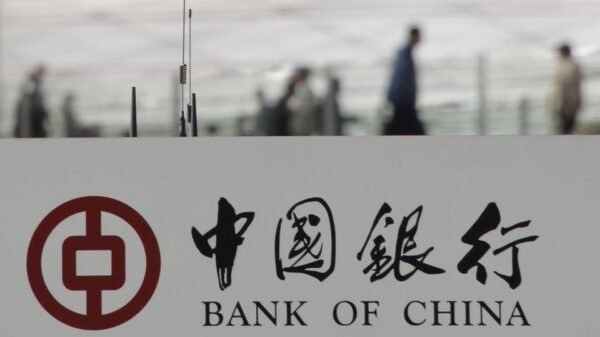In a nutshell, financial risk refers to the possibility of losing money or other valuable assets. We can define risk in the context of financial markets as the amount of money that can be lost when trading or investing. As a result, the risk is not the actual loss, but what could be lost in the future.
To put it another way, many financial services or transactions come with a risk of loss, which is referred to as financial risk. The concept can be applied to a variety of scenarios, including financial markets, business administration, and governing bodies, in general.
Risk management is a term used to describe the process of assessing and dealing with financial risks. However, before diving into risk management, you should have a basic understanding of financial risk and its various types.
Financial risks can be classified and defined in a variety of ways. Investment risk, operational risk, compliance risk, and systemic risk are just a few examples.
Different types of Financial Risk
As previously stated, there are many different ways to categorize financial risks, and their definitions can vary greatly depending on the context. An overview of investment, operational, compliance, and systemic risks is provided in this article.
Investing Risk
Investment risks are those that are associated with investing and trading activities, as the name implies. There are many different types of investment risks, but the majority of them are related to market price fluctuations. Market, liquidity, and credit risks may be included in the investment risk category.
Market Risk
The risk of an asset’s price fluctuating is known as market risk. If Enock buys Bitcoin, for example, he will be exposed to market risk because the price may fall due to volatility.
The first step in market risk management is to calculate how much Enock stands to lose if the price of Bitcoin moves against him. The next step is to devise a strategy that will specify how Enock should react to market fluctuations.
Investors are typically exposed to both direct and indirect market risks. The loss a trader may incur as a result of an adverse change in the price of an asset is referred to as direct market risk. The preceding example depicts a direct market risk (Enock purchased Bitcoin before a price drop).
Indirect market risk, on the other hand, refers to an asset with a secondary or ancillary risk (i.e., less evident). Interest rate risk is an indirect risk in stock markets because it affects stock prices indirectly.
If Robert buys stock in a company, for example, interest rates may have an indirect impact on his holdings. Increasing interest rates will make it more difficult for the company to grow and remain profitable. Higher rates, on the other hand, encourage other investors to sell their stock. They frequently do so in order to pay off their debts, which have become more expensive to service.
Interest rates, on the other hand, have a direct and indirect impact on financial markets. While interest rates have an indirect effect on stocks, they have a direct effect on bonds and other fixed-income securities. Interest rate risk can be considered a direct or indirect risk depending on the asset.
Risk of Liquidity
Liquidity risk refers to the possibility that investors and traders will be unable to buy or sell a particular asset quickly enough to avoid a significant price change.
Assume Enock purchased 100 cryptocurrency units at a cost of $20 each. Assume the price remains stable after a few months, and the cryptocurrency is still trading at around $20.
Alice can quickly sell her $2000 bag in a high-volume, liquid market because there are enough buyers willing to pay $20 per unit. However, if the market is illiquid, only a few buyers would be willing to pay $20 per share. As a result, Enock will most likely have to sell a large number of her coins at a much lower price.
MORE:
- The End of the US dollar; The war has given rise to cryptocurrency as a safer haven Robert Kiyosaki Says
- The FBI Creating a Cryptocurrency Crimefighting Unit
- Can We Predict The Cryptocurrency Ruler for 2022?
Risk of Credit
Credit risk refers to the possibility of a lender losing money as a result of a counterparty default. If Robert borrows money from Enock, for example, he is putting his credit at risk. To put it another way, there’s a chance Robert won’t pay Enock, and this is what we call credit risk. Enock loses money if Robert defaults.
In a broader sense, an economic crisis could occur if a country’s credit risk rises to unacceptably high levels. A global credit risk expansion contributed to the worst financial crisis in the last 90 years.
Hundreds of counterparties were involved in millions of offsetting transactions at the time. When Lehman Brothers went bankrupt, credit risk spread rapidly around the world, triggering a financial crisis that eventually led to the Great Recession.
Operational Risk
Financial losses caused by failures in internal processes, systems, or procedures are referred to as operational risk. These failures are frequently caused by either unintentional human errors or deliberate fraudulent activities.
Periodic security audits, as well as the adoption of robust procedures and effective internal management, should be performed by every company to mitigate operational risks.
There were numerous instances of employees who were poorly managed and were able to make unauthorized trades with their company’s funds. Rogue trading is a term used to describe this type of activity, which has resulted in massive financial losses around the world, particularly in the banking industry.
External events that have an indirect impact on a company’s operations, such as earthquakes, thunderstorms, and other natural disasters, can also cause operational failures.
Risk of Noncompliance
Losses that may occur when a company or institution fails to follow the laws and regulations of their respective jurisdictions are referred to as compliance risks. To mitigate these risks, many businesses implement procedures such as anti-money laundering (AML) and Know Your Customer (KYC) (KYC).
If a service provider or company does not follow the rules, they risk being shut down or facing severe penalties. Due to compliance failures, many investment firms and banks faced lawsuits and sanctions (e.g., operating without a valid license). Compliance risks include insider trading and corruption, to name a few.
Risk to the entire system
The possibility of a specific event causing an adverse effect in a specific market or industry is referred to as systemic risk. For example, the collapse of Lehman Brothers in 2008 sparked a major financial crisis in the United States that spread to many other countries.
The strong correlation between companies in the same industry demonstrates the existence of systemic risks. The bankruptcy of Lehman Brothers would be far less significant if it wasn’t so deeply entwined with the entire American financial system.
Imagine a domino effect, where one piece falls first, causing other pieces to fall. This is a simple way to remember the concept of systemic risk.
The precious metals industry, in particular, experienced significant growth following the 2008 financial crisis. As a result, diversification is one method of reducing systemic risk.
Risk that is systemic vs. risk that is systematic
Systemic risk is not to be confused with aggregate or systematic risk. The latter is more difficult to define and encompasses a broader range of risks, not just financial ones.
Systematic risks can be linked to a variety of economic and sociopolitical factors, including inflation, interest rates, wars, natural disasters, and major policy changes by the government.
In essence, systematic risk refers to events that have a broad impact on a country or society. Agriculture, construction, mining, manufacturing, finance, and other industries may be included. Systemic risk can be reduced by combining low-correlated assets, but portfolio diversification cannot reduce systematic risk.
Conclusion
We went over some of the different types of financial risk, such as investment, operational, compliance, and systemic risks, in this article. The concepts of market risk, liquidity risk, and credit risk were presented in the investment risk group.
When it comes to financial markets, it’s nearly impossible to stay completely risk-free. A trader or investor’s best bet is to mitigate or control these risks in some way. Understanding some of the most common types of financial risk is a good place to start when developing a risk management strategy.
































































Comment Template